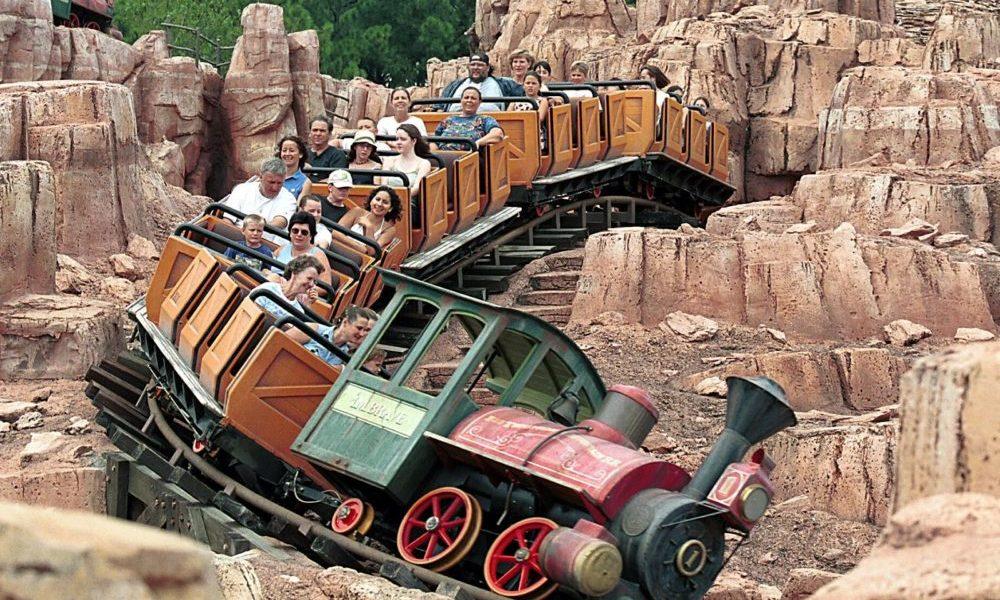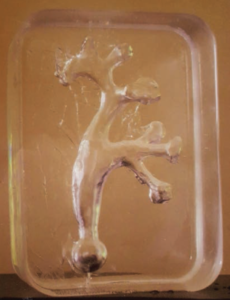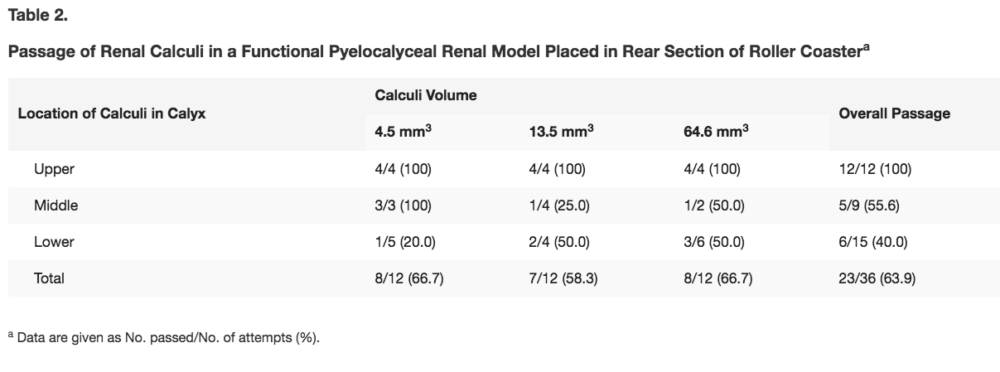 About 11% of men and 7% of women will deal with kidney stones in their lifetime, and for many of these people they will be an ongoing health issue throughout their lives. Passing a kidney stone is often extremely painful, and if a blockage occurs, it can even be life threatening. Just in the United States alone more than 300,000 people seek emergency treatment for their kidney stones annually, costing upwards of $2.1 billion. For most people, the idea of passing a kidney stone is probably about as far away from fun as you can get. But that may soon be changing, as a recent study published in the Journal of the American Osteopathic Association suggests that an unexpectedly effective way to rid yourself of small kidney stones is to ride a roller coaster.
About 11% of men and 7% of women will deal with kidney stones in their lifetime, and for many of these people they will be an ongoing health issue throughout their lives. Passing a kidney stone is often extremely painful, and if a blockage occurs, it can even be life threatening. Just in the United States alone more than 300,000 people seek emergency treatment for their kidney stones annually, costing upwards of $2.1 billion. For most people, the idea of passing a kidney stone is probably about as far away from fun as you can get. But that may soon be changing, as a recent study published in the Journal of the American Osteopathic Association suggests that an unexpectedly effective way to rid yourself of small kidney stones is to ride a roller coaster.
The study was prompted when Michigan State University College of Osteopathic Medicine professor of urology (currently professor emeritus) Dr. David D. Wartinger noted that several patients had reported passing kidney stones after riding Walt Disney World’s roller coaster Big Thunder Mountain Railroad. One patient even claimed to have passed three kidney stones, one after each consecutive ride on the popular roller coaster. Dr. Wartinger’s study documents his attempts to replicate that patents experiences with a highly detailed 3D printed replica of his kidney, and several trips to Walt Disney World. According to his results, it does appear that riding a moderate-intensity roller coaster can lead to the passage of small kidney stones.
“Preliminary study findings support the anecdotal evidence that a ride on a moderate-intensity roller coaster could benefit some patients with small kidney stones. Passing a kidney stone before it reaches an obstructive size can prevent surgeries and emergency room visits. Roller coaster riding after treatments like lithotripsy and before planned pregnancies may prevent stone enlargement and the complications of ureteral obstruction,” the study notes.
Dr. Wartinger and his co-author and fellow doctor Marc A. Mitchell, of The Doctors Clinic in Poulsbo, Washington, had a replica of their patient’s kidney 3D printed using a clear silicone material so the internal structure and movement of the simulated kidney stones could be closely monitored. The replica kidney was 3D modelled using data collected from a ureteroscopy of the patient’s kidney and upper urinary tract. The model was filled with urine and then had three kidney stones of differing sizes sealed inside it. The stones were placed in various positions throughout the internal structure of the replica, including its upper, middle and lower passageways. Once sealed, the kidney model was concealed inside a backpack so it could be brought onto the roller coaster and the effects on the stones could be studied and verified.
The researchers took the model kidney onto the Big Thunder Mountain Railroad roller coaster a total of 20 times, and after each ride the position of the kidney stones was analyzed and recorded. They also recorded the stones’ starting positions in the kidney to see how much they would move during the ride. Additionally, the researchers rode the roller coaster on both the front cars (rows 1-7) a total of 8 rides and the rear car (rows 13-15) a total of 12 rides. The different positions on the roller coaster ended up being very important to the movement of the stones, and resulted in wildly different outcomes.
The results of the study proved that riding the roller coaster did cause the small kidney stones to pass through the model kidney, however the car location proved to be very important to the passage rate. Regardless of the stones’ starting location, riding at the front of the roller coaster caused 4 of 24 small kidney stones to fully pass, or 16.67% of the time. However, riding all the way in the back in the last car caused 23 of 36 kidney stones to fully pass, or 63.89% of the time. The researchers also performed the experiment a few times on Space Mountain and the Walt Disney World railroad, however those results were not published.
“The osteopathic philosophy of medicine emphasizes prevention and the body’s natural ability to heal. What could be more osteopathic than finding a relatively low-cost, non-invasive treatment that could prevent suffering for hundreds of thousands of patients?” Dr. Wartinger concluded.
The research team did have Disney’s permission to bring their urine-filled kidney model onto the ride, however fellow passengers were not notified that they were riding with the world’s most expensive trucker bomb. While this study may sound like an excuse for the researchers to get school credit for going to Disney World, understanding why this occurs could lead to new, less painful methods of passing stones. You can read the entire study here. Discuss further in the 3D Printed Kidney Stones forum over at 3DPB.com.
Subscribe to Our Email Newsletter
Stay up-to-date on all the latest news from the 3D printing industry and receive information and offers from third party vendors.
You May Also Like
3D Printing News Briefs, April 13, 2024: Robotics, Orthotics, & Hypersonics
In 3D Printing News Briefs today, we’re focusing first on robotics, as Carnegie Mellon University’s new Robotics Innovation Center will house several community outreach programs, and Ugogo3D is now working...
Rail Giant Alstom Saves $15M with 3D Printing Automation Software 3D Spark
3D Spark has entered into a three-year deal with the rail giant Alstom. Alstom, a transport behemoth with annual revenues of $16 billion, specializes in the manufacture of trains, trams,...
Meltio Expands Global Reach with New Partnerships in the Americas and Europe
Spanish 3D printing manufacturer Meltio has expanded its sales network across the globe. With the addition of three new partners in the United States, Brazil, Argentina, and Italy, Meltio aims...
3D Printing Webinar and Event Roundup: April 7, 2024
Webinars and events in the 3D printing industry are picking back up this week! Sea-Air-Space is coming to Maryland, and SAE International is sponsoring a 3D Systems webinar about 3D...



































